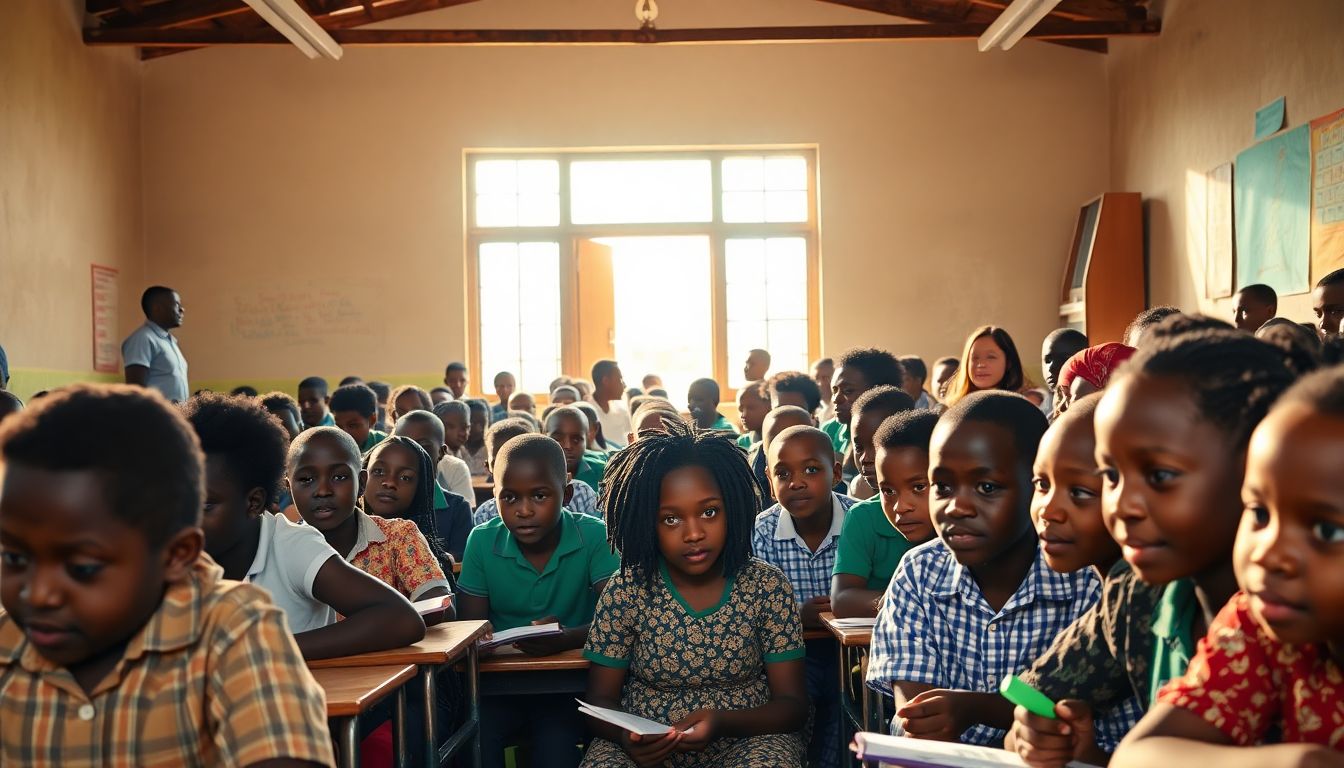
The educational landscape in Nigeria is both vast and challenging. As of recent years, over 10 million children are out of school, leading to alarming educational disparities. This number highlights the urgent need to address the deep-rooted issues within the system. The Nigerian education system faces numerous hurdles, but five primary factors significantly influence its effectiveness and accessibility.
Funding and Resource Allocation
Government Budget Allocation
The percentage of Nigeria’s national budget allocated to education has raised concerns. Over the past decade, the allocation has fluctuated, typically hovering around 6-8%. In contrast, other African nations like Ghana and Kenya allocate upwards of 20%, underscoring a severe funding gap. This disparity hampers the development of educational resources.
Infrastructure Deficiencies
Many schools, especially in rural areas, suffer from a lack of proper infrastructure. Classrooms are often overcrowded, and essential facilities such as libraries and laboratories are scarce. For example, in communities like Yobe State, students learn under trees due to the absence of classrooms. Such situations greatly impact the effectiveness of learning.

Private Sector Involvement
Private schools have emerged as alternatives to public education, often offering better quality. However, affordability remains a significant issue. Many families cannot afford tuition fees, creating a divide between those who can access quality education and those who cannot. This situation can further entrench educational inequity.
Teacher Quality and Training
Teacher Shortages and Distribution
There is a concerning disparity in the number of qualified teachers between urban and rural areas. Reports indicate that urban schools often have a teacher-student ratio of 1:25, whereas rural schools might see ratios as high as 1:60. This imbalance directly affects the quality of education received by students in less populated areas.
Quality of Teacher Training
The effectiveness of teacher training programs in Nigeria varies greatly. Many teachers complete their training without adequate preparation. Educational experts emphasize the need for ongoing professional development to ensure that teachers can meet modern educational demands. Reports suggest that only a fraction of teachers participate in continuous training.
Teacher Motivation and Retention
Low salaries and poor working conditions contribute to low morale among teachers. Many educators leave the profession within the first five years due to these challenges. As a result, the quality of education suffers, and students often face disruptions in their learning.
Curriculum and Assessment
Relevance of Curriculum
The Nigerian curriculum often fails to align with the skills needed in the 21st-century job market. Subjects taught in schools frequently do not address the practical needs of society. Educational stakeholders have called for a review to ensure students acquire skills relevant to today’s economy.
Examination Malpractice and its Effects
Examination malpractice is prevalent in Nigeria and poses a significant threat to educational integrity. Statistics show that up to 80% of students in some regions resort to cheating in examinations. This culture undermines the educational system and brings about distrust in academic qualifications.
Assessment Methods
Current assessment methods largely focus on exams which are not always effective in evaluating a student's capabilities. There’s a pressing need for diverse and comprehensive evaluation strategies that can better reflect students’ knowledge and skills.
Socioeconomic Factors
Poverty and Inequality
Poverty severely impacts educational access in Nigeria. Families struggling to meet basic needs often prioritize immediate survival over schooling. Reports indicate that over 8 million children remain out of school due to financial constraints, perpetuating a cycle of poverty and lack of education.
Child Labor and Early Marriage
Child labor and early marriage disproportionately affect girls' education. In several communities, girls are pulled from school to work or marry young. For instance, certain regions in the north see girls as young as 12 married off, drastically reducing their chances for education.
Cultural Attitudes and Beliefs
Cultural beliefs influence educational attainment, especially for girls. Many families hold traditional views that prioritize boys' education over girls'. This mindset hinders the progress of gender equality in education and limits opportunities for young women.
Security Challenges and Instability
Boko Haram and Insurgency
The Boko Haram insurgency has had a devastating impact on education, particularly in the northeastern states. Schools have been attacked, leading to closures and a significant number of students and teachers displaced. Reports indicate that around 1,500 schools have been shut down due to insecurity.
Kidnapping and School Attacks
Kidnapping has become a grim reality for many schools in Nigeria. Attacks on schools compromise the safety of students and teachers, leading to fear and further school closures. Recent news reports document several high-profile kidnappings, raising alarm about the safety of educational institutions.
Displacement and Refugee Crisis
Displaced children face enormous obstacles in accessing education. Refugee camps often lack adequate schooling infrastructure, leaving many children with few opportunities. The educational needs of these vulnerable populations need urgent attention.
Conclusion
The five key factors affecting education in Nigeria include funding and resource allocation, teacher quality and training, curriculum and assessment relevance, socioeconomic challenges, and security issues. Improving the education system requires addressing these challenges head-on.
Actionable steps could include increasing government funding, enhancing teacher training programs, and securing schools against threats. Addressing these issues is crucial for building a brighter future for Nigeria and its youth. Investing in education means investing in the country’s long-term prosperity and stability.